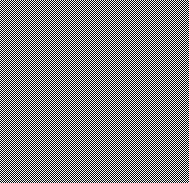yawetaG wrote:Flat panel TV's also have that problem. On my Samsung TV, sending analog over component video is upscaled and therefore very bad quality, while anything that goes via SCART gets handled fine.
Yeah, I noticed this, too. My Samsung SyncMaster had a sister model, which was a full-fledged TV set.
Perhaps the SCART connection was better because it was properly shielded or because Component was processed by an external chip.
Or if you used a vintage console, maybe it was because of the low-res signals. Modern TVs are often unaware about old 240p (rather 243p) and 288p signals.
They are technically interlaced signals, but carry progressive picture information. Or in simple words, the odd/even pictures look the same.
Anway, I'm not good at explaining things, I'm afraid. 😅 There's a Wikipedia entry telling about it.
I'm just mentioning it, since the whole topic is constantly popping up in the retro gaming community (esp. NES and Atari 2600).
https://en.wikipedia.org/wiki/Low-definition_television
http://www.hdretrovision.com/240p/
Rawit wrote:Every signal that isn't the same resolution as the native resolution of the screen gets upscaled with flat panels. The loss of quality is because of something else, perhaps deinterlacing or a denoise filter.
True, but in my case it was something else I believe. I ran the screen in native resolution (1920x1080)
and there, VGA was threaded as a serious, business "PC" input while the HDMI signal was considered a consumer's input.
And since DVI and HDMI are relatives, this could also affect DVI inputs.
Speaking of Full HD, I'm surprised how good VGA is when using quality cables.
Normally, someone should think the difference between it and digital video is more apparent.
Rawit wrote:
In my case the DFP/DVI out of my Savage4 is a lot better than its VGA or Matrox VGA for example. Even a Gefen VGA to HDMI scaler can't beat it.
That reminds me of my old S3 UniChrome card. It had excellent VGA output, but wasn't really
Vista/7 compatible (no Aero Glass) and couldn't accelerate Flash.
Which is a shame, because the card was otherwise awesome in XP. DVD playback was great due to
quality Inverse-Consinus-Transformation and other hardware assisted de-noise/de-blocking features.
I used PowerDVD 6 Deluxe, by the way. ^^
Edit: Parts of the text corrected. Really, I should stop writting stuff in the middle of the night, hah. 😅
Edit: Link addded.
"Time, it seems, doesn't flow. For some it's fast, for some it's slow.
In what to one race is no time at all, another race can rise and fall..." - The Minstrel
//My video channel//
